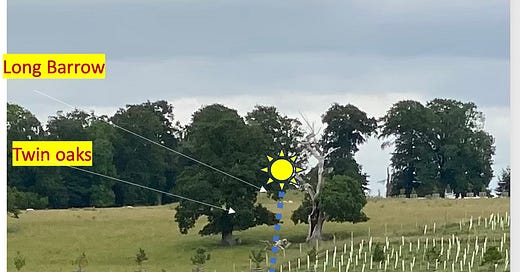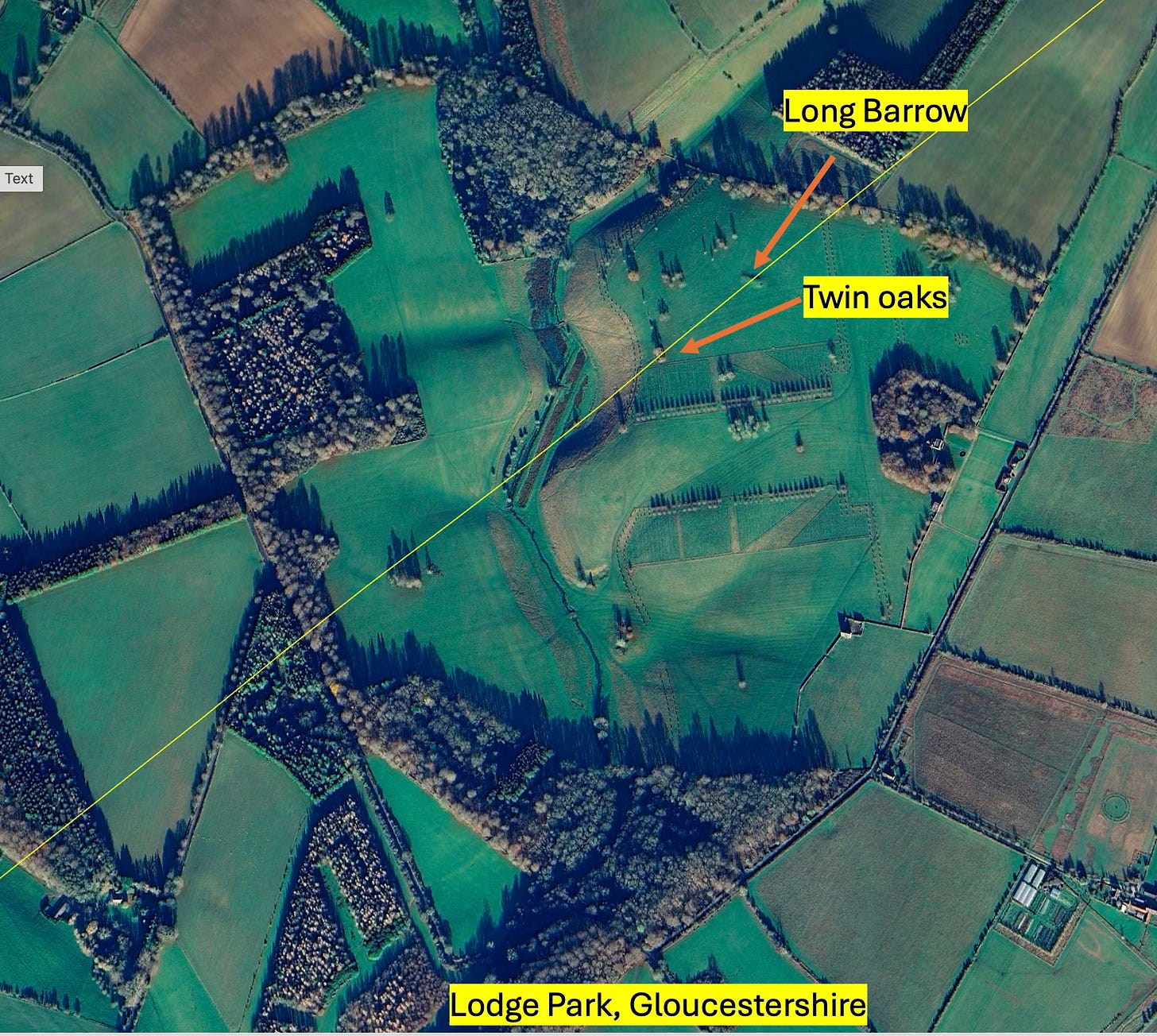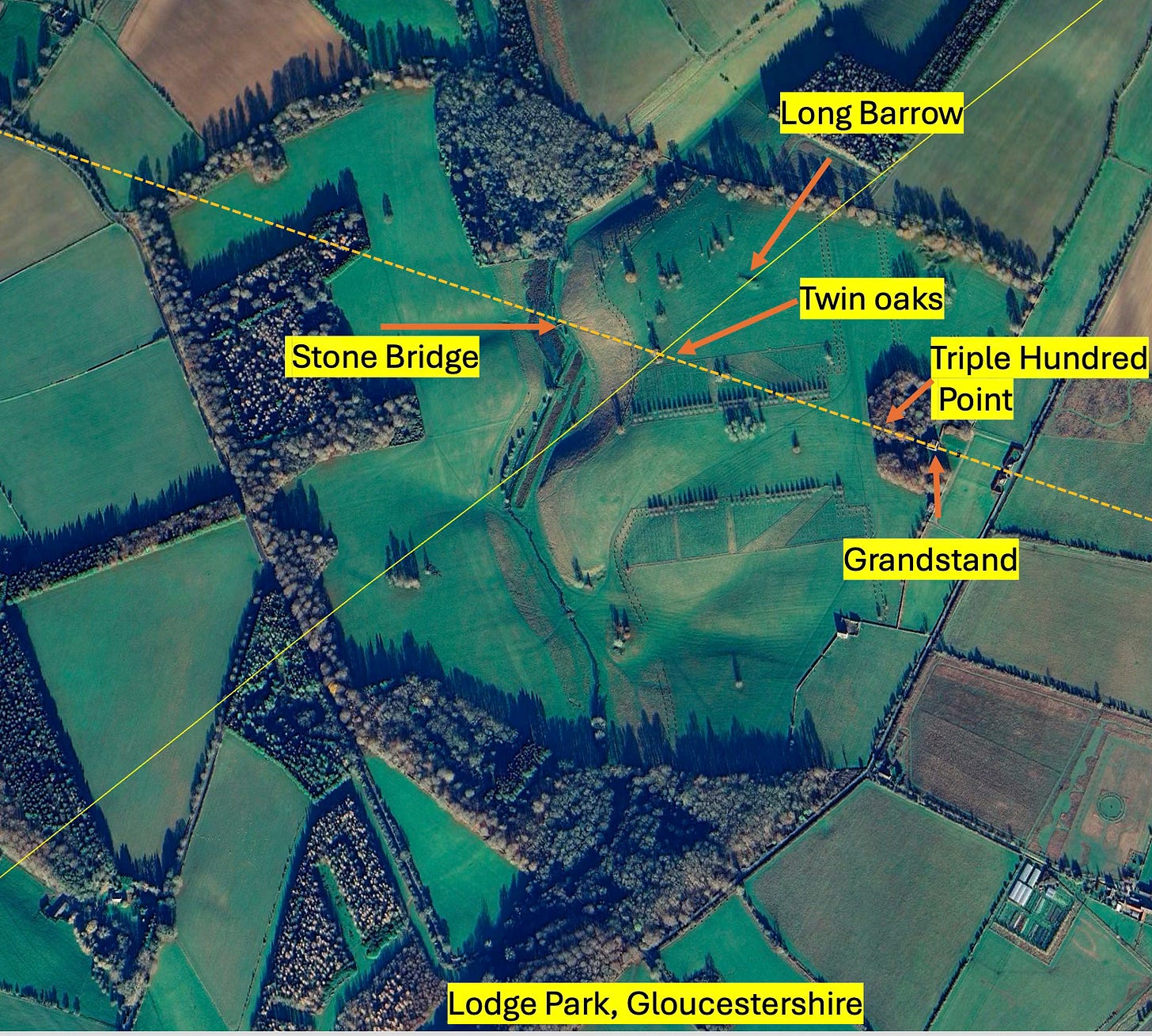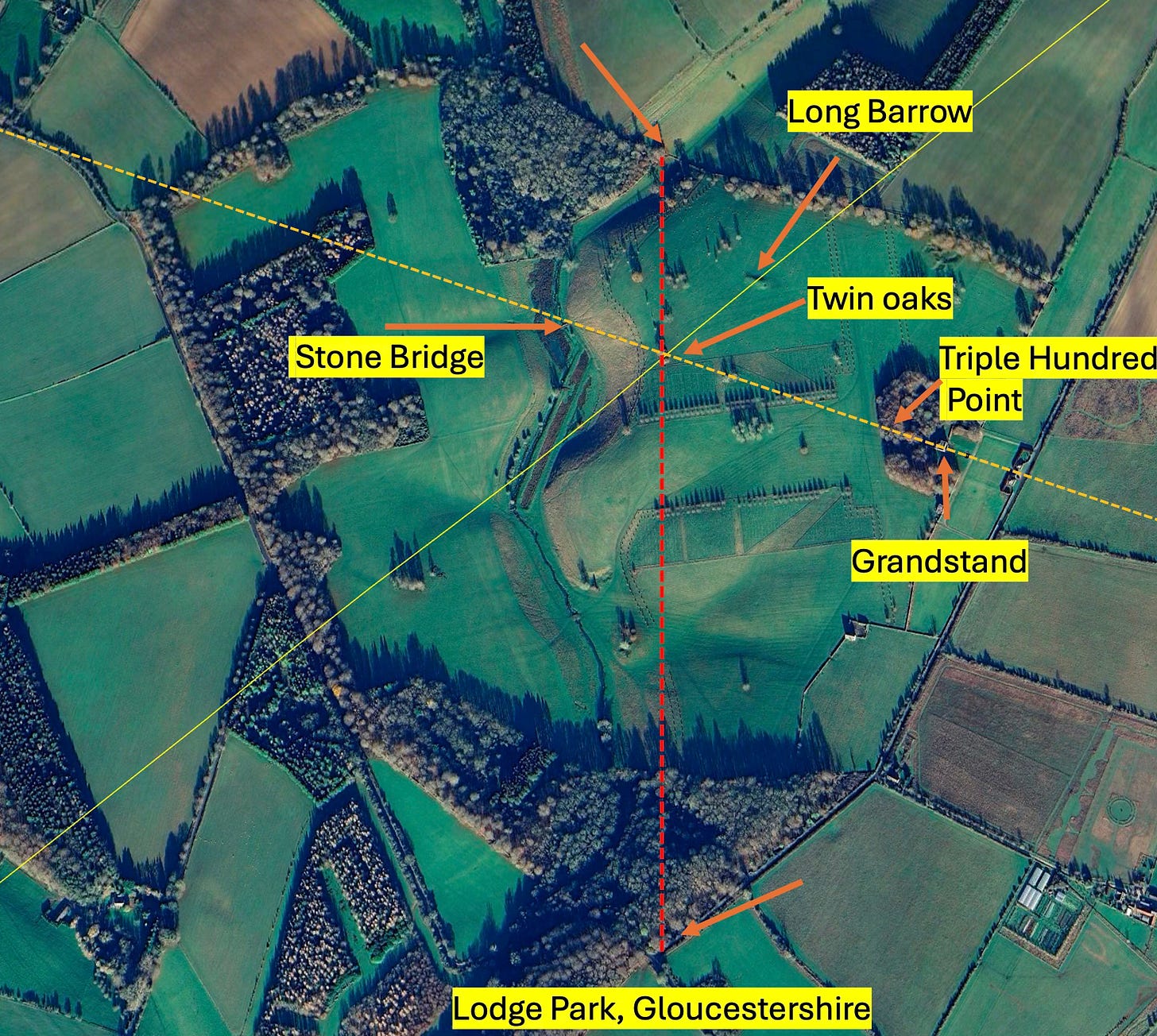As regular subscribers know, I have been investigating the geography and landscape of Lodge Park, a seventeenth-century parkland near Sherborne in Gloucestershire. This truly extraordinary landscape, now celebrated as a partial c.1730 Bridgeman design, conceals much older features, hiding in plain sight.
Our research has uncovered fascinating geometric puzzles previously unnoticed, including the geometric positioning of gates and an apparent Vitruvian layout. I conjecture this sophisticated planning dates to the 1630s, predating Bridgeman's celebrated work by a full century.
Ancient Alignments and Solar Phenomena
Perhaps most remarkably, the Long Barrow occupies a position of singular importance along a line of ancient features running at 49 degrees across the countryside—precisely the angle of sunrise on Midsummer's Day. When viewed from specific points along this alignment, the sun rises directly over the Long Barrow, dramatically framed by two ancient oaks, each at least five centuries old.
This cannot be mere chance, though I confess myself at a loss to explain it fully. Traditional folklore offers intriguing parallels: the "Oak King" reached peak power at midsummer, yielding to the Holly King at the autumn equinox for dominion over midwinter. One oak has been definitively dated to 1492; its twin, apparently lightning-struck in antiquity, likely shares this venerable age.
The accompanying annotated image demonstrates what my calculations predict for this Saturday's summer solstice sunrise on 21 June. Coincidence seems increasingly unlikely.
Here’s that line plotted from above:
The Grandstand's Hidden View
Sleepless excitement over these discoveries led me to examine my extensive map collection more closely, focusing on the relationship between these twin oaks and other parkland features. What I found astonished me.
The Lodge Park Grandstand has long puzzled historians, (and me). Its alignment defies obvious explanation:
It sits askew to the deer course from the north. while at first glance it may appear to be perpendicular to the deer course to its East , it is not.
It predates the Bridgeman landscape by over a century, sharing no obvious relationship with the grand avenue or indeed much else
This apparent randomness now makes perfect sense. Draw a line bisecting the grandstand's front and back facades, and it leads directly through the twin oaks. More significantly, this alignment passes exactly through the ancient "triple hundred" point where three Anglo-Saxon boundaries converge at the copse's western edge. The line continues precisely to the old stone bridge spanning the River Leach.
I can find no record of this alignment having been previously identified. Four exact hits along a single sightline stretches coincidence’s credibility.
North-South Precision
A final alignment proves equally intriguing. A line drawn EXACTLY due North-South through the twin oaks strikes with mathematical precision both the park's central Northern corner at Sally Coppice and its southernmost boundary corner on the Aldsworth road. More coincidence?
Conclusion: Design or Chance?
I possess nor offer no coherent explanation for these observations. While some elements might represent coincidence, the accumulating geometric evidence—combined with discoveries discussed in previous articles—suggests something far more deliberate. But of course the dating of the oaks compared to the features poses logical challenges. The peculiar precision of these alignments, particularly when considered alongside the solar phenomena and ancient boundary markers, points perhaps towards a sophisticated , geometric landscape design in c1630 that is able to fold in pre-existing features. That’s an unconventional suggestion , but the man who had the geometric skills to do it is old Mr Inigo Jones again. I may very well be wrong. What’s you alternate explanation? Happy to give alternate theories the space to argue their point. Or do you shrug and ascribe to dozens of coincidences? That’s fine too, but I’m beginning to think that’s a hard position to take.
So, the secret key to Lodge Park may lie not in Bridgeman's celebrated eighteenth-century vision, but in an older geometric consciousness that understood the profound relationship between astronomical events, ancient boundaries, and sacred landscape features, in particular these fabulous twin old oaks. The parkland poses a perfect setting for a midsummer celebration such as the church frowned on at the time , and therefore didn’t record. Bonfires, dancing, burning wheels rolled down the hill and at the end of midsummer night, a pause and softly the un rises exactly between an oaken portal, the triumph of the Oak King, the link to ancestors and the sun rising as if from their grave. It rises every year here for 5000 years, so it linked the local population to their history as it should do us today. It emphasises continuity and the hand in hand predictability of the seasons and the local community within it. It reinforces ownership of the land too. Whether this represents conscious design or extraordinary coincidence remains tantalisingly unclear—but the evidence grows increasingly compelling with each discovery.






